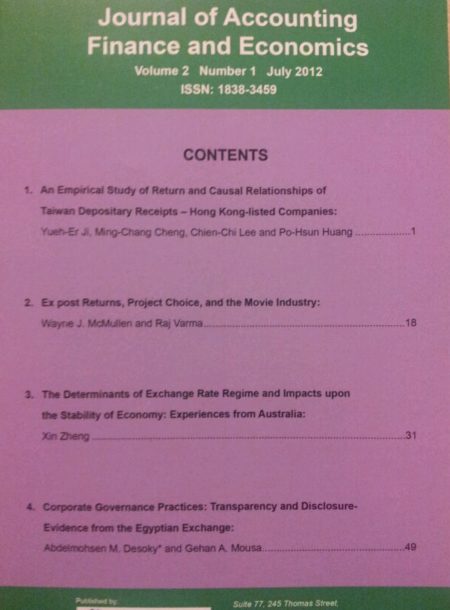Journal of Accounting, Finance and Economics
Vol. 5. No. 1., September 2015, Pages: 24 – 45
Fertility Choice by the Couples: A Multinomial Model for Household Decision Making
Xin Zheng
This paper formulates a micro-founded and optimization based choice model where husband and wife make inter-temporal fertility decisions in a life cycle to optimize utilities and household’s wealth subjecting to financial and health constraints, specifically, husband and wife make rational and dynamic decisions about the number of children to produce and the expenditure on children to maximize household’s wealth over life span. Gender differences in decision making about fertility choice and wealth accumulation are captured by specifications of utility functions, preference parameters and income constraints. Hypothesis concerning whether husband and wife’s optimal fertility decisions differ in direction and magnitude due to heterogeneous utility functions, household income, inflation and child welfare policies is tested. The methodologies involve random utility discrete choice models governing a couple’s behavior from the theoretic perspective and linear regression estimation with parametric distributions of random coefficients from the empirical perspective. Panel data including Australian birth rates, household income, female/male earnings, maternity leave payment, mortality rate, child-care subsidies, education expenses, living costs indices and household expenditure on health are collected to test the theory empirically. The conclusions are that the optimal number of children and expenditure on children are jointly determined by risk aversion coefficients of utility functions, household income, child care expenses and subsidies. The choice to produce the first baby is a balanced outcome from the interaction among the dynamics of household income, number of marriages, maternity payment, difference in men and women’s earnings, mortality rate and the number of women who worked after child birth. The choice to produce multiple babies is influenced additionally by decreasing marginal child care cost and congestion cost in raising multiple children. The choice of expenditure on raising children is more flexible and dynamic, couples make a series of optimal choices in accordance with each period’s child-care subsidies, education expenses and living costs indices.

